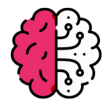Healthcare professionals face mounting pressure from administrative tasks that steal precious time from patient care. For every hour physicians spend with patients, nearly two additional hours are spent on electronic health record (EHR) and desk work within the clinic day, with another one to two hours of personal time each night dedicated to additional computer and clerical tasks. This overwhelming burden doesn’t just affect productivity, it’s contributing to widespread burnout across the industry.
Implement Real-Time Voice Documentation with Ambient AI
Modern ambient listening technology is transforming how clinicians capture patient interactions during visits. These systems go far beyond basic voice-to-text conversion, offering sophisticated AI-powered tools that understand medical context and terminology.
Deploy Conversational AI That Captures Patient Interactions Automatically
With the integration of GPT-4 and specialized medical language models, advanced ambient AI systems are now capable of generating comprehensive clinical notes in real-time. Thanks to effective implementation, the process of AI clinical documentation operates so seamlessly that it becomes almost invisible to both patients and providers, working quietly in the background and allowing for a natural conversational experience.
These systems can differentiate between patient responses, provider observations, and treatment discussions. They’re smart enough to separate clinical information from casual conversation, ensuring your documentation remains focused and relevant.
Configure Smart Templates That Adapt to Your Specialty
Specialty-specific voice recognition requires careful training on medical terminology unique to your practice. Custom vocabulary integration helps the AI understand cardiology terms differently from dermatology language, improving accuracy significantly.
The best systems offer automated coding suggestions during documentation, helping you capture billable services while you’re still with the patient. This real-time approach prevents revenue loss from forgotten procedures or incomplete documentation.
Optimize Data Entry Through Intelligent Automation Workflows
Smart automation can eliminate repetitive typing tasks that consume hours each day. These healthcare automation solutions work behind the scenes to pre-populate forms and cross-reference historical data automatically.
Set Up Smart Form Auto-Population Using Historical Data
AI pattern recognition analyzes previous visits to predict likely data entries for current appointments. When a diabetic patient arrives for their quarterly check-up, the system automatically pre-fills routine measurements, medications, and standard assessments.
Cross-visit data correlation means lab results from external systems appear in the right fields without manual entry. Integration with diagnostic systems ensures that recent imaging reports, blood work, and specialist consultations populate automatically.
Enable Predictive Text and Clinical Decision Support
Real-time medication interaction alerts appear as you type prescriptions, catching dangerous combinations before they reach the pharmacy. Evidence-based treatment recommendations pop up based on current symptoms and patient history.
Streamline Clinical Workflows with Smart Task Automation
Intelligent task management systems prioritize urgent items while automating routine administrative work. This approach helps clinical teams focus on high-value activities that directly impact patient outcomes.
Automate Routine Administrative Tasks and Reminders
Smart scheduling algorithms automatically prioritize tasks based on clinical urgency and regulatory deadlines. Follow-up reminders get sent to patients without staff intervention, while care gap alerts notify providers about overdue screenings or vaccinations.
Message routing becomes intelligent, directing prescription refill requests to nurses while sending urgent lab results directly to physicians. This targeted approach reduces inbox clutter and ensures important communications don’t get buried.
Deploy AI-Powered Clinical Documentation Assistance
Advanced documentation tools handle complex cases by analyzing multiple data sources simultaneously. They can identify patterns in symptoms, correlate with diagnostic results, and suggest comprehensive differential diagnoses.
Automated quality metrics score documentation completeness in real-time, highlighting missing elements before you finish the note. Real-time compliance checking prevents common errors that trigger audit flags or claim denials.
Enhance Interoperability with AI-Driven Data Integration
Modern healthcare requires seamless data exchange between multiple systems and platforms. AI-powered tools can bridge communication gaps between different EMR systems, laboratories, imaging centers, and specialist practices.
Connect Disparate Systems Through Intelligent APIs
FHIR-compliant AI middleware creates translation layers between incompatible systems. This technology automatically standardizes data formats, ensuring patient information flows correctly regardless of the source system’s native structure.
Real-time synchronization with third-party applications means updates in one system immediately reflect across all connected platforms. This prevents the dangerous scenario where different providers work with outdated patient information.
Implement Cross-Platform Analytics and Reporting
Unified dashboard creation pulls data from multiple EMR sources to provide comprehensive patient views. Population health management becomes more effective when AI can analyze patterns across integrated systems from various healthcare organizations.
Automated regulatory reporting eliminates manual data compilation for quality measures and government programs. The system continuously monitors compliance metrics and generates required reports without human intervention.
Accelerate Decision-Making with Predictive Clinical Insights
Predictive analytics transform reactive healthcare into proactive patient management. These systems identify at-risk patients before complications develop, enabling early interventions that improve electronic medical records outcomes and reduce costs.
Deploy Risk Stratification and Early Warning Systems
Patient deterioration prediction algorithms continuously monitor vital signs, lab values, and clinical notes for warning patterns. Readmission risk scoring helps discharge planners identify patients who need additional support services.
Chronic disease progression monitoring tracks subtle changes in patient status over time. These systems can detect gradual declines that might escape human observation during brief clinical encounters.
Enable Personalized Treatment Recommendations
AI-driven clinical pathway optimization considers individual patient factors alongside evidence-based guidelines. Drug dosing analysis accounts for patient-specific factors like kidney function, drug interactions, and genetic markers.
Genomic data integration supports precision medicine approaches, suggesting therapies most likely to succeed based on individual genetic profiles and biomarkers.
Maximize User Adoption Through AI-Powered Training and Support
Successful implementation depends heavily on user acceptance and proper training. Smart learning systems adapt to individual skill levels and learning preferences.
Implement Adaptive Learning Systems for Staff Onboarding
Personalized training modules adjust difficulty based on user performance and experience level. Real-time coaching provides context-specific help exactly when users need it most.
Gamification elements make learning more engaging while tracking competency development. Staff members progress at their own pace while maintaining consistent quality standards across the organization.
Deploy Intelligent Help Systems and User Assistance
Context-aware help recommendations appear automatically when users encounter unfamiliar workflows. Chatbot support handles common questions instantly, reducing help desk tickets and training time.
Automated workflow optimization suggestions appear based on usage patterns, helping individual users work more efficiently over time. The system learns from power users and shares best practices with the entire team.
Measuring Success: ROI Metrics and Performance Indicators
Tracking the right metrics proves AI implementation value and identifies areas for improvement. Focus on measurements that demonstrate both operational efficiency and clinical quality improvements.
Essential KPIs for Tracking EMR Efficiency Improvements
Documentation time reduction percentages should show consistent improvement over time. EMR efficiency metrics include clicks per task, time per patient encounter, and after-hours documentation work.
Error rate decreases in billing, coding, and clinical documentation indicate improving quality. Staff satisfaction surveys help track burnout reduction and job satisfaction improvements that enhance EMR performance.
Cost-Benefit Analysis Framework for AI Implementation
Calculate implementation costs against measurable time savings to determine ROI timelines. Revenue impact from improved billing accuracy often justifies AI investments within the first year.
Long-term operational efficiency gains compound over time, creating substantial value beyond initial cost recovery periods.
Final Thoughts on EMR Efficiency
Healthcare automation solutions represent more than just technological upgrades, they’re essential tools for sustainable medical practice. The seven strategies outlined here address the most critical pain points that drain efficiency from modern healthcare delivery.
By implementing these AI-powered approaches systematically, healthcare organizations can reclaim precious time for patient care while improving documentation quality and reducing staff burnout. The future belongs to practices that embrace these technologies thoughtfully and strategically.
Common Questions About Boosting EMR Efficiency
How can AI-powered security tools improve the efficiency of security teams?
AI enhances security by providing real-time analysis, predictive capabilities, and automation of routine tasks. AI for security solutions empowers security professionals and IT leaders to protect their organizations more effectively and streamline security operations.
How to make AI more efficient?
Prevent AI overfitting by using regularization techniques, implementing dropout layers in neural networks, and employing early stopping during training. Increasing your dataset size and ensuring data diversity can also help your model generalize better to new inputs.
What’s the typical ROI timeline for AI-powered EMR tools?
Most organizations see initial benefits within 3–6 months, with full ROI typically achieved within 12–18 months through reduced administrative costs and improved productivity throughout clinical workflows



